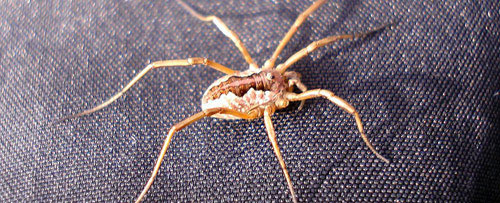Treat fear with artificial intelligence
Neuroscience researchers have found a way to remove some fear by combining artificial intelligence (AI) and brain imaging technology. This step will be very helpful for about 4% to 5% of people around the world obsessed with fears, typically long-legged fear.
New treatments are called Decoded Neurofeedback process. There is no need for people with cognitive fear and trying to eliminate fear, this method relies on determining the brain model associated with a certain fear, then "overwriting information" on it by rewarding ways for the brain to gradually eliminate fear and replace it with a more positive image.
Researchers say this method can be used to treat other diseases such as post-traumatic stress disorder (PTSD).
"When giving a small memory related to fear into the brain, we can develop a fast and accurate method to read this memory using AI algorithms. The challenge then is to find a way for the brain to unconsciously reduce or eliminate this fearful memory, ' said Professor Ben Seymour from the University of Cambridge in England.

Long leg spider - one of the most popular obsessions.(Photo: Anja Jonsson / Flickr).
With a total of 17 volunteers participating in the experiment, scientists created a "fearful memory" by combining a certain image (evoking fear) and a mild electric shock.
After three days, the volunteers participating in the experiment will be rewarded with a small amount of money each time their brain images show a similar pattern. Predicted participants will be rewarded with money based on brain activity but cannot explain how.
The goal of this experiment is to gradually align the model (brain) identified by artificial intelligence with rewarded memories instead of fear.
"As a result, what reminds me of that memory instead of being transformed into fear is now adjusted to become more positive images," said lead researcher Ai Koizumi from Kyoto, Japan, the International Advanced Telecommunications Research Institute, said.
The next experiment was conducted to track how participants would react when they were shown images associated with fear, and the researchers found that there were no signs of fear, or no any activity in the amygdala - the center of fear of the brain.
"This means that we have reduced fear memories but do not make participants aware of themselves experiencing that fear," Professor Koizumi said.

Brain shots with artificial intelligence.(Photo: Ai Koizuzmi).
This is in stark contrast to the directly exposed treatment, for example, for people with stress disorder who have direct contact with the cause of their stress, in safe conditions.
This approach is also often effective, from thinking "to face the fear" to overcome it - but the new research team wants to find ways to improve old treatments.
Although the sample for this experiment is relatively small (only 17 participants), the researchers suggest that the new method could be developed to help people overcome fear with less pressure and tension. more straight.
"In order to apply this method, we have to build a library of information about the brain related to many different fears, such as spider scare. attend regular Decoded Neurofeedback sessions to eliminate near fears, ' Professor Seymour said.
The study was published in Nature Human Behavior.
- What is Artificial Intelligence? What is AI (artificial intelligence)?
- Artificial intelligence causes nightmares for people
- China wants to dominate global artificial intelligence
- IBM's artificial intelligence invented new perfumes
- The United States allows the use of artificial intelligence to diagnose diseases
- Artificial Intelligence detects 85% of network attacks, becoming smarter
- Artificial intelligence: Development history and future potential
- Artificial intelligence has learned how to create another artificial intelligence
- Admire the faces created by artificial intelligence
- Artificial intelligence writes letters just like humans
- Artificial Intelligence is ready to launch
- Artificial intelligence can predict when you die
 The world's first sexless AI voice
The world's first sexless AI voice This cool t-shirt will make you invisible to AI
This cool t-shirt will make you invisible to AI AI can predict personality only through selfie photos
AI can predict personality only through selfie photos The world-famous chess player lost to Golaxy before, artificial intelligence 'made in China'
The world-famous chess player lost to Golaxy before, artificial intelligence 'made in China'